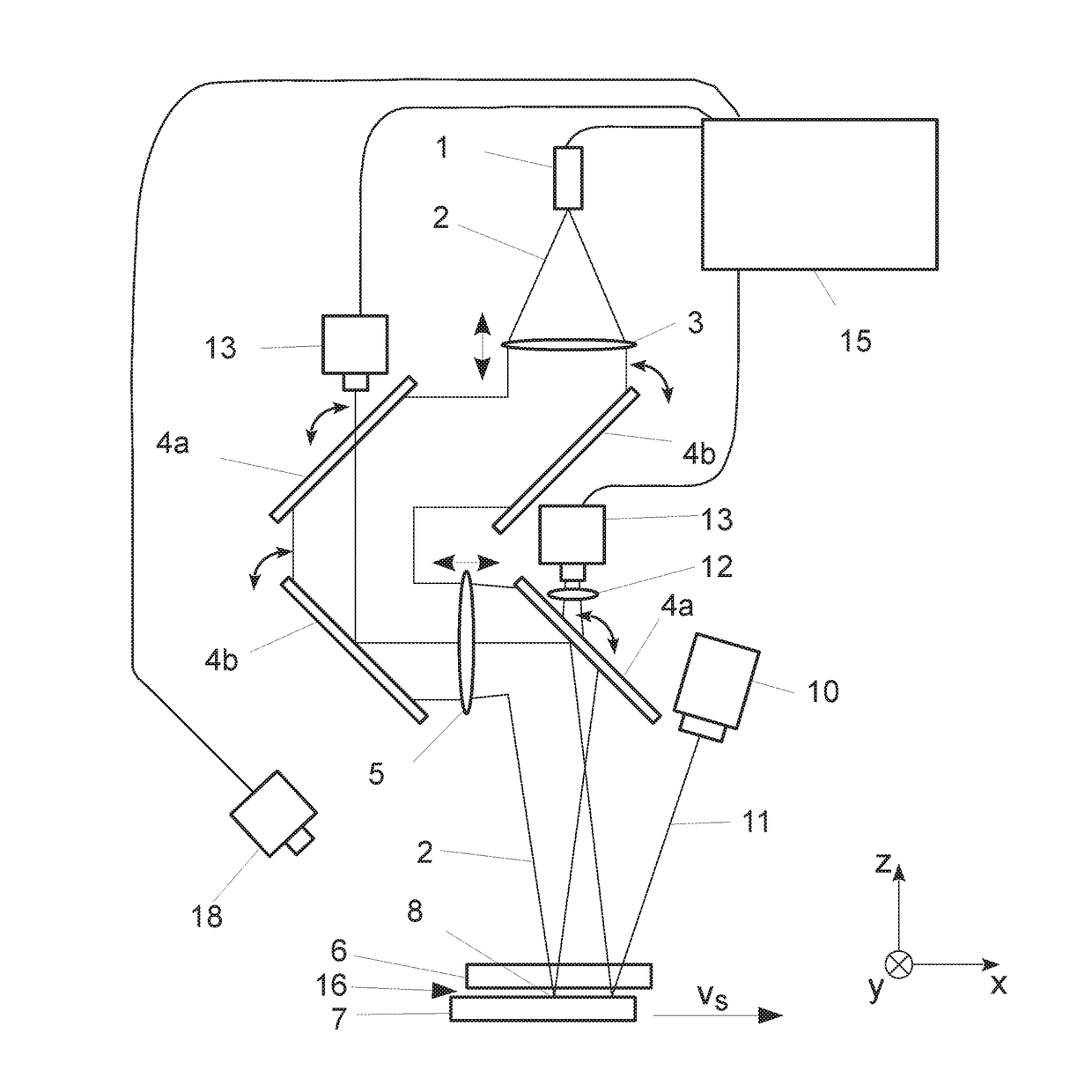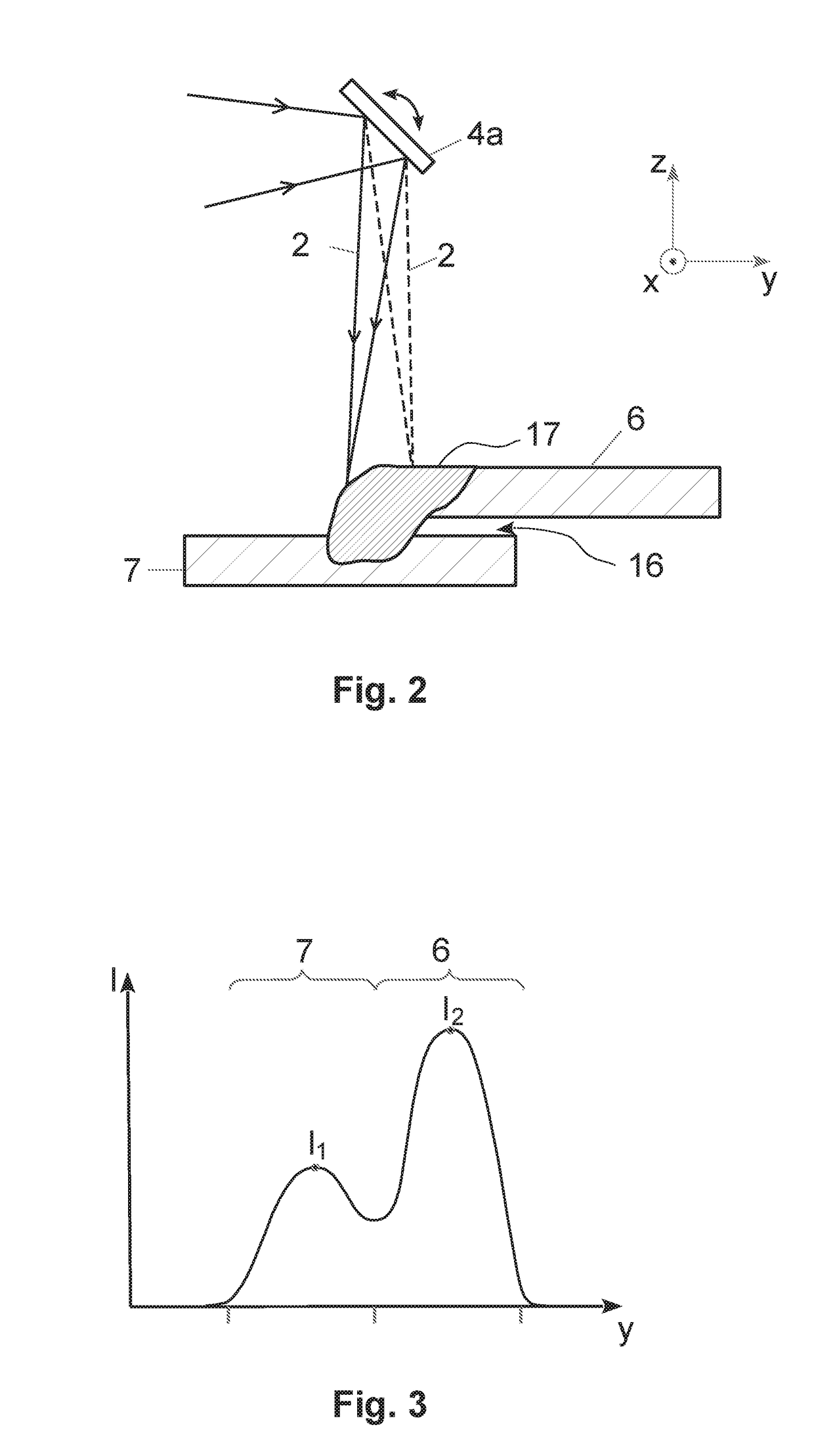Method and Apparatus for Joining Workpieces at a Lap Joint
a technology of lap joints and workpieces, which is applied in the direction of laser beam welding apparatus, welding/soldering/cutting articles, manufacturing tools, etc., can solve the problems of increasing the number of lap joints, so as to reduce the effort for part preparation and high degree of automation. , the effect of constant high quality of the weld seam
- Summary
- Abstract
- Description
- Claims
- Application Information
AI Technical Summary
Benefits of technology
Problems solved by technology
Method used
Image
Examples
Embodiment Construction
[0019]In accordance with the invention, the method and the joining apparatus for joining a plurality of workpieces, especially those made of aluminum or high-strength steel, at a lap joint by means of a processing beam are provided. The workpieces to be joined may be e. g. sheets of aluminum. The processing beam may be e.g. a laser beam; however, it may also be provided that the processing beam generally is a beam of electro-magnetic radiation (e.g. an infra-red beam), a particle beam (e.g. an electron beam) or a sound beam (e.g. in the form of directed ultrasound).
[0020]According to the invention the compensation of a gap formed between two workpieces at a lap joint is performed by melting of material from the upper sheet, i.e. the sheet metal respectively the workpiece arranged at the upper position (with respect to the plumb line) at the lap joint during joining, using the processing beam in such a way that the gap present at the joint is filled completely with molten material fl...
PUM
| Property | Measurement | Unit |
|---|---|---|
| Angle | aaaaa | aaaaa |
| Angle | aaaaa | aaaaa |
| Height | aaaaa | aaaaa |
Abstract
Description
Claims
Application Information
 Login to View More
Login to View More - R&D
- Intellectual Property
- Life Sciences
- Materials
- Tech Scout
- Unparalleled Data Quality
- Higher Quality Content
- 60% Fewer Hallucinations
Browse by: Latest US Patents, China's latest patents, Technical Efficacy Thesaurus, Application Domain, Technology Topic, Popular Technical Reports.
© 2025 PatSnap. All rights reserved.Legal|Privacy policy|Modern Slavery Act Transparency Statement|Sitemap|About US| Contact US: help@patsnap.com



